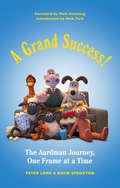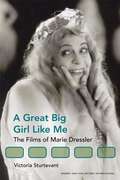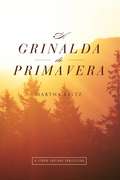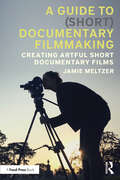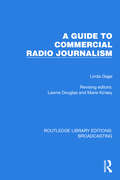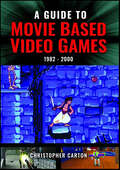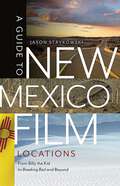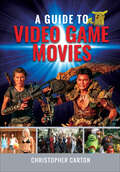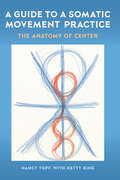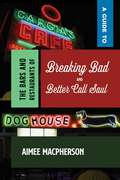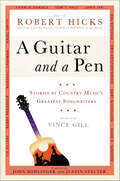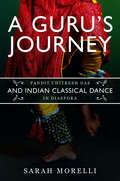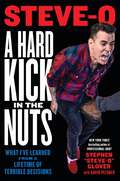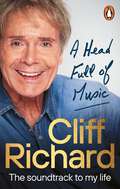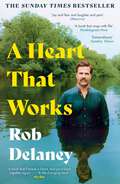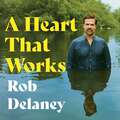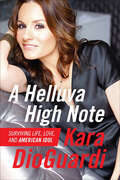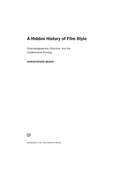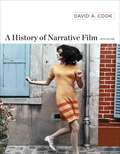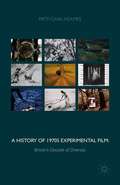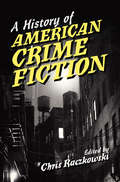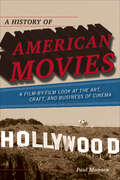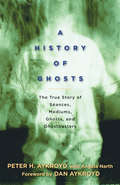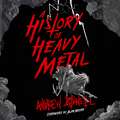- Table View
- List View
A Grand Success!: The Aardman Journey, One Frame at a Time
by David Sproxton Peter LordThe creators of Chicken Run and the Wallace & Gromit series share the inside story of their Oscar award-winning animation company.Aardman Animations was founded in 1972 by Peter Lord and David Sproxton. Joined by animator Nick Park in 1985, Aardman pioneered a quirky, lovable style of stop-motion animation and brought to life a string of unforgettable movies and television shows, including the highest-grossing stop-animated film of all time, Chicken Run.With A Grand Success!, Lord, Sproxton, and Park tell the 45-year history of Aardman. From their first short films, made on a lark on their kitchen table, to advertisements and music videos, A Grand Success! recounts the adventures and challenges of developing their own unique style, growing their business, working with famous actors, and conquering Hollywood, all while animating at 24 painstaking moves per second.
A Great Big Girl Like Me: The Films of Marie Dressler
by Victoria SturtevantIn the first book-length study of Marie Dressler, MGM's most profitable movie star in the early 1930s, Victoria Sturtevant analyzes Dressler's use of her body to challenge Hollywood's standards for leading ladies. At five feet seven inches tall and two hundred pounds, Dressler often played ugly ducklings, old maids, doting mothers, and imperious dowagers. However, her body, her fearless physicality, and her athletic slapstick routines commanded the screen. Sturtevant interprets the meanings of Dressler's body by looking at her vaudeville career, her transgressive representation of an "unruly" yet sexual body in Emma and Christopher Bean, ideas of the body politic in the films Politics and Prosperity, and Dressler as a mythic body in Min and Bill and Tugboat Annie.
A Grinalda de Primavera
by Martha KeltzSondra, de 18 anos, ou “Sunny”, se formou recentemente no ensino médio. Depois que sua mãe solteira faleceu, Sunny assumiu a tutela legal de sua meia-irmã Amanda, ou “Mandy”, que tem oito anos de idade. A história começa em junho, quando as garotas se mudam de Nova York para uma pequena cidade montanhosa no oeste de Maryland. Elas receberam duas propriedades que pertenciam ao pai de Mandy, que nunca conheceram. As coisas tornam-se complicadas para Sunny quando sua irmãzinha deseja continuar seu treinamento de balé. A criança é uma dançarina excepcionalmente talentosa e uma pequena superestrela natural e carismática, enquanto Sunny é uma garota quieta, estudiosa e trabalhadora, que ainda não tem certeza sobre a direção que sua vida tomará. Com a assistência capaz de muitos novos amigos que as irmãs conheceram na pequena cidade, além de seus bons amigos em Nova York, Sunny coloca de lado seus próprios interesses e objetivos para gerenciar a carreira de Mandy. No entanto, ela consola o conforto - e realiza seu destino final - através de excursões sossegadas e solitárias para uma pequena casa na floresta chamada de “Cabana”, uma das propriedades dadas às duas meninas. Aqui ela descobre as maravilhas naturais da floresta circundante e o número incompreensível de estrelas no céu profundo noturno. O duplo mistério de A Grinalda de Primavera é revelado perto do final da história. Uma parte do mistério faz sentido para Sunny, enquanto ela se surpreende com o segundo significado mais pessoal.
A Guide to (Short) Documentary Filmmaking: Creating Artful Short Documentary Films
by Jamie MeltzerUsing examples and hard-earned experiences from the Author's courses and lectures at the esteemed MFA in Documentary Film Program at Stanford University, A Guide to (Short) Documentary Filmmaking: Creating Artful Short Documentary Films explores what is unique about the short-form documentary and guides the reader through the process – from ideation to completion and distribution.This accessible and practical textbook guides readers through the steps of creating powerful and artful documentaries. Interviews with filmmakers and case studies of innovative and successful recent documentary shorts are included throughout to provide experienced insights and complement the chapters on Research, Pre-production, Production, Editing, and Distribution.The first and most definitive of its kind, this is the only resource to explore the short documentary as a distinct art form. It will therefore be essential for all students and professionals involved in producing this medium.
A Guide to Commercial Radio Journalism (Routledge Library Editions: Broadcasting #2)
by Linda GageA Guide to Commercial Radio Journalism (1999) covers every aspect of the profession, from journalistic practice to media law, and gives detailed instruction on the techniques of editing and using equipment and on the basic skills of writing, reporting and producing. There is also a whole chapter dedicated to advice on court reporting.
A Guide to Movie Based Video Games, 1982–2000
by Christopher CartonExplore two decades of licensed video games based on blockbuster movies! You’ve seen the movie, now PLAY the movie! Long before gaming came to the big screen, cinema arrived in the homes of millions in the form of licensed video games; playable merchandise that tied in to some of the major tentpoles of cinematic history. Many of these games followed the storylines of the movies on which they were based, as well as providing supplementary adventures to major franchises. Collected in this book are some of the biggest games to come from Hollywood adventures during the '80s and '90s. In this comprehensive book, you’ll find over 300 games across 18 chapters, with sections dedicated to major movie franchises such as Star Wars, Jurassic Park, Top Gun, Pixar, Aliens and Indiana Jones, along with nearly 200 full-color screenshots of major releases. Showcasing the highs and lows of early computer gaming through the 16-bit era and onto the advent of 3D console gaming, A Guide to Movie Based Video Games: 1982 - 2000 covers two decades of video games with trivia, analysis and recommendations. Grab your controller, step into the silver screen and get ready to play!
A Guide to New Mexico Film Locations: From Billy the Kid to Breaking Bad and Beyond
by Jason StrykowskiA Guide to New Mexico Film Locations offers a &“call sheet&” to explore many of the Land of Enchantment&’s most iconic film locales, such as those from Easy Rider or Terminator Salvation. From alpine forests to sand dunes, from spaceports to historic ranches, New Mexico&’s movie backdrops showcase the most dramatic and stunning parts of the state. Using this book as a guide, cinephiles, movie buffs, tourists, producers, New Mexico locals, and armchair explorers can retrace the steps of silver-screen cowboys, superheroes, aliens, and outlaws.Author Jason Strykowski showcases fifty spectacular destinations in this guide including White Sands National Park, the Cumbres & Toltec Scenic Railroad, the Albuquerque Rail Yards, Ski Santa Fe, Carlsbad Caverns National Park, and much, much more. He further gives a glimpse into the many eateries, bars, and hotels where film crews spend their time and offers recommendations for outdoor adventures, indoor shopping, and family-friendly places to play. With plenty of insider tips, this unique guide will inspire readers to experience New Mexico&’s picturesque film locations beyond the screen.Featured Films Include:The Grapes of WrathEasy RiderIndiana Jones and the Last CrusadeCowboys & AliensTerminator SalvationThorWild HogsCrazy HeartLone SurvivorNatural Born KillersContactThe Men Who Stare at Goatsand more . . .
A Guide to Video Game Movies
by Christopher CartonHave you ever wondered if that game you love was made into a movie? Flip this book open and find out! Explore the fascinating journey of your favorite video games as they make their way to the silver screen! This comprehensive guide contains information on over forty big-screen adaptations of popular video games, including the histories of the series that inspired them. Covering four decades of movies, readers can learn about some of the most infamous movies in video game history, with genres such as horror, martial arts, comedy and children’s animation ensuring there’s plenty of trivia and analysis to keep gamers hooked. With nearly two-hundred full color stills, posters and screenshots, the book is a go-to guide to discovering facts about some of the biggest box office hits and the most disappointing critical bombs in history. From bizarre science fiction like Super Mario Bros. to the latest big budget releases like Monster Hunter, and dozens in between, A Guide to Video Game Movies should please film buffs and die-hard game fans alike. Whether you’re looking for rousing blockbuster action, family-friendly entertainment or a late-night B-movie to laugh at with your friends, you’re bound to find a movie to fit your taste. Put down your controller and grab your popcorn!
A Guide to Western Civilization, or My Story
by Joe Bob BriggsThis book will change your life. It's got chapters in here about how Joe Bob invented the American topless bar, how he solved the Kennedy assassination, how he learned to sin with fat girls, and of course how he became the monstrous country-western star he is today. This book also contains a complete history of the world.
A Guide to a Somatic Movement Practice: The Anatomy of Center
by Nancy TopfAn introduction to embodied movement through the work of a dance education pioneer In this introduction to the work of somatic dance education pioneer Nancy Topf (1942–1998), readers are ushered on a journey to explore the movement of the body through a close awareness of anatomical form and function. Making available the full text of Topf’s The Anatomy of Center for the first time in print, this guide helps professionals, teachers, and students of all levels integrate embodied, somatic practices within contexts of dance, physical education and therapy, health, and mental well-being. Hetty King, a movement educator certified in the Topf Technique®, explains how the ideas in this work grew out of Topf’s involvement in developing Anatomical Release Technique—an important concept in contemporary dance—and the influence of earlier innovators Barbara Clark and Mabel Elsworth Todd, founder of the approach to movement known as “ideokinesis.” Featuring lessons written as a dialogue between teacher, student, and elements of the body, Topf’s material is accompanied by twenty-one activities that allow readers to use the book as a self-guided manual. A Guide to a Somatic Movement Practice is a widely applicable entry point into the tradition of experiential anatomy and its mindful centering of the living, breathing body.
A Guide to the Bars and Restaurants of Breaking Bad and Better Call Saul
by Aimee MacphersonA toast to curly fries, hot dogs, and hard-shell tacos, Aimee Macpherson’s guide to the bars and restaurants of Breaking Bad and Better Call Saul celebrates the critically acclaimed shows’ fusion of Albuquerque’s real and imagined food and drink.The restaurants and bars featured in Macpherson’s compendium show us glimpses of Walter White’s and Jimmy McGill’s Albuquerque. From the Dog House to Savoy Bar and Grill, from Tuco’s Hideout to Los Pollos Hermanos and every pit stop in between, Macpherson takes us on a tour of the Duke City’s dreamscape of edible artifacts, connecting us to the on-screen heroes and villains we love and admire. Show by show, season by season, Macpherson reveals how restaurants and bars undergo hours of painstaking transformations before appearing on the small screen. Colorful photography and descriptions of the food and drink accompany Macpherson’s insider show analysis. While this book can’t give you the taste of Mike’s pimento cheese sandwich, it does deliver a flavor of the city that has been a main character in this successful franchise from the time Walter White first broke bad in 2008.So, leave the fancy restaurants to New York, ignore the juicing in LA, forget your Paleo diet, and come and taste Albuquerque. Savor the luscious fare of these small-screen giants as you take in the hot sun, the high altitude, and the Duke City’s local grub.
A Guitar and a Pen: Stories by Country Music's Greatest Songwriters
by Robert HicksNothing tells a story better than the story-songs of country music. A Guitar and A Pen presents, for the first time, the literary work of some of the best storytellers in the world: the songwriters who cut and polish tales down to sparkling three-minute gems. A blend of humor and poignancy, these tales range from Kris Kristofferson's charming tale of how an explicit natural rock formation causes chaos in a small farming town, to the domestic drama of a Kentucky family with six daughters, to Charlie Daniels' character-driven fable of money and unhappiness, to Gary Nicholson's riveting tale of an albino African American singer/songwriter who inspired him to be a musician. A celebration of music and storytelling, other contributors include Hal Ketchum, Janis Ian, Mark D. Sanders, Tom T. Hall, Marshall Chapman, and Robert Hicks, among many other notable Nashville luminaries.
A Guru’s Journey: Pandit Chitresh Das and Indian Classical Dance in Diaspora (Music in American Life)
by Sarah MorelliAn important modern exponent of Asian dance, Pandit Chitresh Das brought kathak to the United States in 1970. The North Indian classical dance has since become an important art form within the greater Indian diaspora. Yet its adoption outside of India raises questions about what happens to artistic practices when we separate them from their broader cultural contexts. A Guru's Journey provides an ethnographic study of the dance form in the San Francisco Bay Area community formed by Das. Sarah Morelli, a kathak dancer and one of Das's former students, investigates issues in teaching, learning, and performance that developed around Das during his time in the United States. In modifying kathak's form and teaching for Western students, Das negotiates questions of Indianness and non-Indianness, gender, identity, and race. Morelli lays out these issues for readers with the goal of deepening their knowledge of kathak aesthetics, technique, and theory. She also shares the intricacies of footwork, facial expression in storytelling, and other aspects of kathak while tying them to the cultural issues that inform the dance.
A Hard Kick in the Nuts: What I've Learned from a Lifetime of Terrible Decisions
by Stephen Steve-O GloverStephen "Steve-O" Glover—social media icon, comedy-touring stalwart, and star of Jackass—delivers a hilarious and practical guide to recovery, relationships, career, and how to keep thriving long after you should be dead. Steve-O is best known for his wildly dangerous, foolish, painful, embarrassing, and sometimes death-defying stunts. At age 48, however, he faces his greatest challenge yet: getting older. A Hard Kick in the Nuts: What I&’ve Learned from a Lifetime of Terrible Decisions is a captivating exploration of life and how to live it by an individual who has already lived way more than a lifetime&’s worth of extreme experiences. Steve-O grapples with the right balance between maturity and staying true to yourself, not repeating your &“greatest hits,&” maintaining sobriety and a healthy regimen, avoiding selfishness, and finding the right partner for life. Having built a gargantuan and loyal social media following while establishing a successful stand-up career—all after a couple of decades of dubious behavior—Steve-O is proof that anyone can find meaning and fulfillment in life, no matter what path they choose. Packed with self-deprecating wit and gruelingly earned wisdom, A Hard Kick in the Nuts will reverberate with readers everywhere who have lived a lot (sometimes too much) and are now wondering how to approach the years to come. Or maybe just need some good motivation to get out of bed tomorrow. One of many tips: Be your own harshest critic, then cut yourself a break, and enjoy this book.
A Head Full of Music: The soundtrack to my life
by Cliff RichardForeword by Bob StanleyOn a sunny Saturday morning in May 1956, a fifteen-year-old, then called Harry Webb, was mooching down Waltham Cross High Street. He heard some music blaring out of a parked car. It stopped him in his tracks.The song was 'Heartbreak Hotel' by Elvis Presley. It sounded like nothing he had ever heard before. In that instant, the schoolboy who was destined to take the hit parade by storm as Cliff Richard fell in love with rock and roll. It gave him the thrill, the purpose and the mission that has shaped his life ever since.Cliff lives in and for music. And with 65 years as a hitmaker, the music filling his head is a broad category. His soundtrack begins by blasting us all back into that first life-changing explosion of rock and roll, and also includes great soul stars such as Aretha Franklin, longtime colleagues like Elton John, and much-missed close friends Cilla Black and Olivia Newton-John.This book is meaningful to Cliff on many levels. The 30 or so songs here that make up the soundtrack to his life have each moved him deeply, but it's also about the legendary artists he met, and often got to know. He shares those stories and memories with you, too.A Head Full of Music is a vibrant personal journey for Cliff, and it's a joy to accompany him on it. Get wired for sound with him and read on.
A Heart That Works
by Rob DelaneyIn this memoir of loss, acclaimed writer and comedian Rob Delaney grapples with the fragile miracle of life, the mysteries of death, and the question of purpose for those left behind.When you're a parent and your child gets hurt or sick, you not only try to help them get better but you also labour under the general belief that you can help them get better. That's not always the case though. Sometimes the nurses and the doctors can't fix what's wrong. Sometimes children die.Rob Delaney's beautiful, bright, gloriously alive son Henry died. He was one when he was diagnosed with a brain tumour. An experience beyond comprehension, but an experience Rob must share. Why does he feel compelled to talk about it, to write about it, to make people feel something like what he feels when he knows it will hurt them? Because, despite Henry's death, Rob still loves people. For that reason, he wants them to understand.A Heart That Works is an intimate, unflinching and fiercely funny exploration of loss - from the harrowing illness to the vivid, bodily impact of grief and the blind, furious rage that follows, through to the forceful, unstoppable love that remains. This is the story of what happens when you lose a child, and everything you discover about life in the process.
A Heart That Works: THE SUNDAY TIMES BESTSELLER
by Rob DelaneyThe comedian and star of Catastrophe's devastatingly moving memoir about his young son's death.In this devastating, beautiful and deeply moving memoir of the loss of his son, Rob Delaney explores what life really means, and why it matters. When you're a parent and your child gets hurt or sick, you not only try to help them get better but you also labour under the general belief that you can help them get better. That's not always the case though. Sometimes the nurses and the doctors can't fix what's wrong. Sometimes children die.Rob's beautiful, bright, deeply alive son Henry died. This is the story of what happens when you lose a child, and everything you discover about life in the process. Why does he feel compelled to talk about it, to write about it, to disseminate information designed to make people feel something like what he felt? What his wife feels? What his other sons feel? Done properly or well, it will hurt them. Why does he want to hurt people? Because, despite the death of his son, Rob still loves people. For that reason, he wants them to understand.(P)2022 Hodder & Stoughton Limited
A Helluva High Note: Surviving Life, Love, and American Idol
by Kara DioGuardiOver the years, award-winning hitmaker, savvy record executive, successful music publisher and former American Idol judge Kara DioGuardi has worked with the best. Her songs have been recorded by such superstars as Pink, Carrie Underwood, Britney Spears, Christina Aguilera, Kelly Clarkson, Gwen Stefani, Santana, Steven Tyler, Celine Dion and many others. But success wouldn’t have happened for this songwriter, artist and producer without the darker times of defeat. Now, in this daringly honest memoir, DioGuardi reveals everything she’s learned about living, creating, loving, stumbling, picking herself up again and ultimately succeeding. And, of course, she hares behind-the-scenes stories from her years on American Idol, including the real truth about her departure from the show. Passionate, wide and funny, A Helluva High Note inspires readers to find, develop and follow their own true voice.
A Hidden History of Film Style
by Christopher BeachThe image that appears on the movie screen is the direct and tangible result of the joint efforts of the director and the cinematographer. A Hidden History of Film Style is the first study to focus on the collaborations between directors and cinematographers, a partnership that has played a crucial role in American cinema since the early years of the silent era. Christopher Beach argues that an understanding of the complex director-cinematographer collaboration offers an important model that challenges the pervasive conventional concept of director as auteur. Drawing upon oral histories, early industry trade journals, and other primary materials, Beach examines key innovations like deep focus, color, and digital cinematography, and in doing so produces an exceptionally clear history of the craft. Through analysis of several key collaborations in American cinema from the silent era to the late twentieth century--such as those of D. W. Griffith and Billy Bitzer, William Wyler and Gregg Toland, and Alfred Hitchcock and Robert Burks--this pivotal book underlines the importance of cinematographers to both the development of cinematic technique and the expression of visual style in film.
A History Of Narrative Film
by David CookA trusted reference, a popular teaching text, and a well-written history is now bolder, briefer, and better than ever. <P><P> Sophisticated in its analytical content, current in its coverage, and informed throughout by fascinating historical and cultural contexts, A History of Narrative Film is one of the most respected and widely read texts in film studies. This Fifth Edition features a new chapter on twenty-first century film, and includes refreshed coverage of contemporary digital production, distribution, and consumption of film. Now 20% shorter, with new four-color design and an updated art program, A History of Narrative Film is also the only film history text available as an ebook.
A History of 1970s Experimental Film: Britain's Decade Of Diversity
by Patti Gaal-HolmesThis comprehensive historical account demonstrates the rich diversity in 1970s British experimental filmmaking, acting as a form of reclamation for films and filmmakers marginalized within established histories. An indispensable book for practitioners, historians and critics alike, it provides new interpretations of this rich and diverse history.
A History of American Crime Fiction
by Chris RaczkowskiA History of American Crime Fiction places crime fiction within a context of aesthetic practices and experiments, intellectual concerns, and historical debates generally reserved for canonical literary history. Toward that end, the book is divided into sections that reflect the periods that commonly organize American literary history, with chapters highlighting crime fiction's reciprocal relationships with early American literature, romanticism, realism, modernism and postmodernism. It surveys everything from 17th-century execution sermons, the detective fiction of Harriet Spofford and T. S. Eliot's The Waste Land, to the films of David Lynch, HBO's The Sopranos, and the podcast Serial, while engaging a wide variety of critical methods. As a result, this book expands crime fiction's significance beyond the boundaries of popular genres and explores the symbiosis between crime fiction and canonical literature that sustains and energizes both.
A History of American Movies: A Film-by-Film Look at the Art, Craft, and Business of Cinema
by Paul MonacoIn A History of American Movies: A Film-by-Film Look at the Art, Craft and Business of Cinema, Paul Monaco provides a survey of the narrative feature film from the 1920s to the present. The book focuses on 170 of the most highly regarded and recognized feature films selected by the Hollywood establishment: each Oscar winner for Best Picture, as well as those voted the greatest by members of the American Film Institute. By focusing on a select group of films that represent the epitome of these collaborations, Monaco provides an essential history of one of the modern world's most complex and successful cultural institutions: Hollywood. Divided into three sections, "Classic Hollywood, 1927-1948," "Hollywood In Transition, 1949-1974," and "The New Hollywood, 1975 To The Present," Monaco examines some of the most memorable works in cinematic history, including The General, Wings, Bringing Up Baby, Gone with the Wind, Citizen Kane, Casablanca, On the Waterfront, The Searchers, Psycho, West Side Story, The Godfat
A History of Ghosts: The True Story of Séances, Mediums, Ghosts, and Ghostbusters
by Peter H. Aykroyd Angela NarthPeter Aykroyd spent his childhood watching his family's parlor séances through the crack of a basement door. Here, for the first time, Aykroyd tells the strange and delightful story that inspired his son, Dan, to make the mega-hit, Ghostbusters. Part history, part family legend, A History of Ghosts starts in 1848 in upstate New York, where the spiritualist craze first began. Aykroyd introduces the reader to notable mediums while telling the story of the development of spiritualism, interweaving a personal history marked by a fascination with ghosts and spirits with the larger narrative about the role the paranormal has played in our culture. Such legendary figures as Sir Arthur Conan Doyle and Harry Houdini appear and vanish. Everyone loves a good ghost story. Successful TV shows such as Medium and Ghost Hunters are proof that our national obsession with ghosts is here to stay. Millions of Americans believe in the paranormal—and even skeptics have heard a bump in the night and suspected it might be something supernatural.
A History of Heavy Metal
by Andrew O'NeillThe history of heavy metal brings brings us extraordinary stories of larger-than-life characters living to excess, from the household names of Ozzy Osbourne, Lemmy, Bruce Dickinson and Metallica (SIT DOWN, LARS!), to the brutal notoriety of the underground Norwegian black metal scene and the New Wave Of British Heavy Metal. It is the story of a worldwide network of rabid fans escaping everyday mundanity through music, of cut-throat corporate arseholes ripping off those fans and the bands they worship to line their pockets. <p><p>The expansive pantheon of heavy metal musicians includes junkies, Satanists and murderers, born-again Christians and teetotallers, stadium-touring billionaires and toilet-circuit journeymen. Award-winning comedian and life-long heavy metal obsessive Andrew O'Neill has performed his History of Heavy Metal comedy show to a huge range of audiences, from the teenage metalheads of Download festival to the broadsheet-reading theatre-goers of the Edinburgh Fringe. <p><p>Now, in his first book, he takes us on his own very personal and hilarious journey through the history of the music, the subculture, and the characters who shaped this most misunderstood genre of music.
